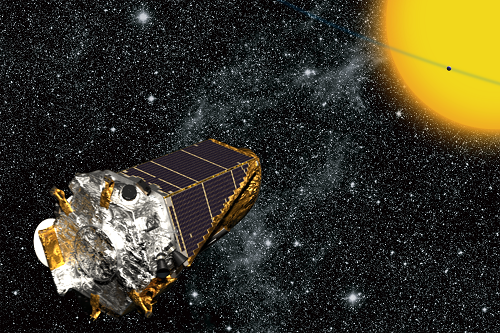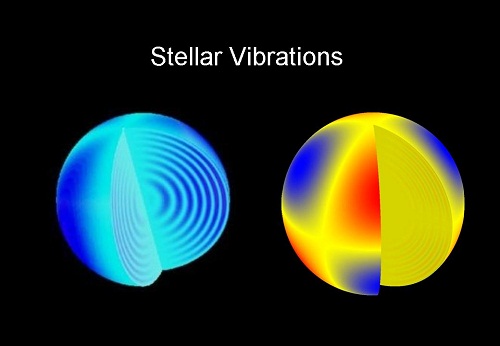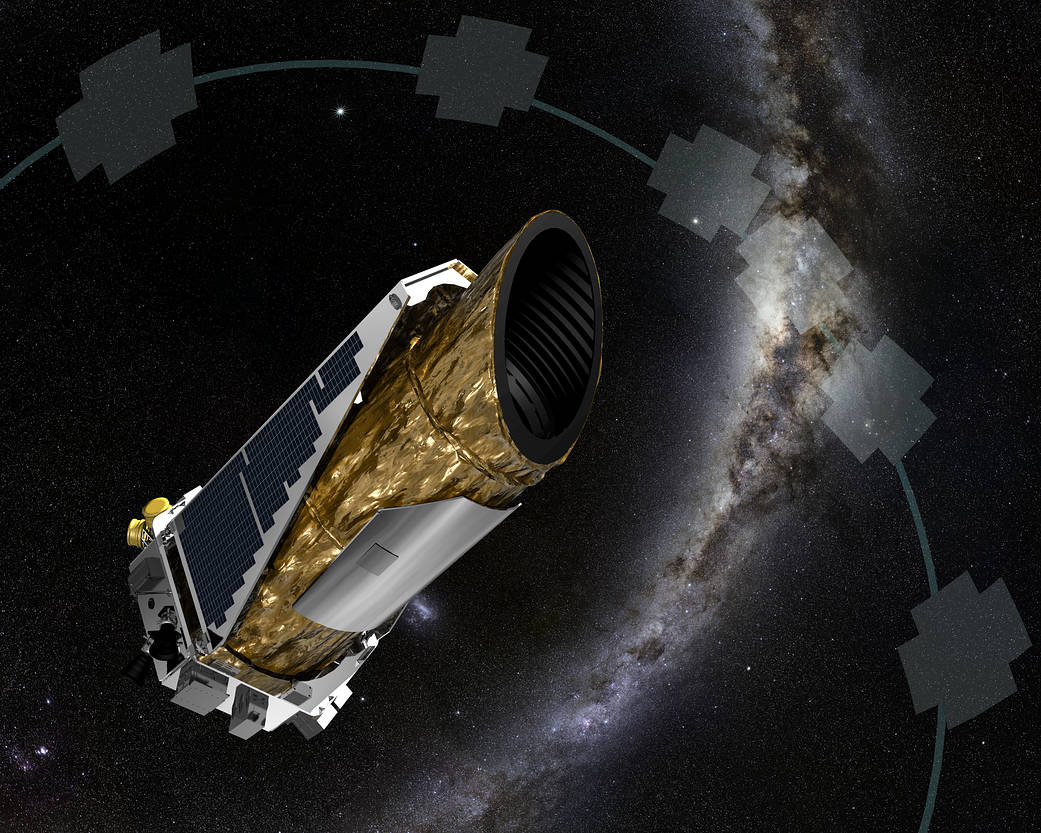
The Shaw Prize in Astronomy 2015 is awarded to William J Borucki for his conceiving and leading the Kepler mission, which greatly advanced knowledge of both extrasolar planetary systems and stellar interiors.
William J Borucki was born in 1939 in Chicago, USA and is the Principal Investigator for the Kepler Mission of the US National Aeronautics and Space Administration (NASA). He received a Master's degree in Physics from the University of Wisconsin, Madison in 1962 and a Master's degree in Meteorology from San Jose State University, California in 1982. From 1962 until now, he has been working at NASA Ames Research Center as Space Scientist. Following his Master's degree in Physics, he moved to Silicon Valley, where he first worked on the development of the heat shields for the Apollo mission in the Hypersonic Free Flight Branch at NASA Ames. After the successful moon landings, he transferred to the Theoretical Studies Branch where he investigated lightning activity in planetary atmospheres and developed mathematical models to predict the effects of nitric oxides and chlorofluoromethanes on Earth's ozone layer. NASA's Kepler Mission was launched in March 2009 to hunt for exoplanets using transit photometry.

The night sky is dotted with a multitude of stars. Would any of them host a planet like ours? The major objective of the Kepler Mission is to determine the frequency of Earth-sized planets in the habitable zone of Sun-like stars where liquid water and thus life may exist.
Since these stars are far away and any planets that exist would be much smaller, dimmer and lost in the glare of the parent stars, how can we detect such planets?
In 1984, William J Borucki and Audrey Summers published a paper assessing the potential for detecting extrasolar planetary systems by transit photometry and emphasized that detection of Earth-size exoplanets would require observation from above the atmosphere to avoid atmospheric disturbance. Subsequently, he actively advocated the development of a space mission that could discover planets potentially capable of harbouring life.
Borucki submitted four proposals between 1992 and 1998 but they were rejected. Faced with rejection and skepticism, Borucki bolstered the proposals with new studies, overhauled an old observatory, built a photometer and connected it to the telescope of the observatory to show the feasibility of monitoring the brightness of thousands of stars simultaneously. Furthermore, he built a prototype of the instrument that was proposed to be launched into space. After many years of his effort, the US National Aeronautics and Space Administration (NASA) finally accepted his fifth proposal in 2001, began the Kepler Mission in 2002 and launched the Kepler Space Telescope in 2009.
Unlike an ordinary telescope with a narrow field of view, the Kepler Space Telescope has a wide field of view: about 15 degrees across. It would line up 30 Moons in a row to span the Kepler field of view. (Credit: Carter Roberts)
The Kepler Space Telescope's main component is a photometer, which is a light sensitive device to measure the brightness of stars. Reaction wheels are flywheels used to control the orientation of the telescope.
CCDs of the Kepler Space Telescope (Credit: NASA)
The CCD modules at the four corners are used for guiding and the other 21 modules are used for scientific observation.
The dips in a star's light during such transits are minuscule compared to the brightness of the star, and are challenging to detect. For an Earth-size exoplanet transiting a Sun-like star, the change in brightness is less than 1/10,000. The effect is similar to the dimming one might see if a flea were to crawl across a car's headlight viewed from afar.
A single event that looks like a transit is not enough to prove the discovery of a new exoplanet. It has to be confirmed by observing several such candidate events over several years that have the same depth (dip in star light), duration (time to transit the star), and period (same time interval between successive events). Planetary transits have durations of a few hours to less than a day. Transit depths determine the ratio of the planet's surface area to that of its host star. Kepler's third law is used to determine the size of planetary orbits from the mass of the star and the periods discovered by observing repeated transits.
When an exoplanet passes in front of, or transits, its star, the brightness of the star will be reduced slightly when seen from Earth. The transit method detects these changes in the brightness of a star to find exoplanets.
Transit of Venus. On Earth, we can see the transit of Mercury or Venus when Mercury or Venus moves across the solar disk. The observed brightness of the Sun decreases slightly during a transit. However, for the transit of an exoplanet which is far away, the image of the transiting exoplanet cannot be resolved and only the observed brightness of the parent star decreases slightly.
Kepler-452b is located 1,400 light-years away in the constellation Cygnus. It is the smallest planet discovered orbiting in the habitable zone of a star like our Sun. (Credits: NASA/JPL-Caltech/T. Pyle)
Kepler-62 is a star located 1,200 light-years from the Earth. It has five planets similar to the size of Earth, represented by letters b, c, d, e, and f respectively. Among them, Kepler-62e and Kepler-62f are located within the habitable zone. They are believed to have a solid surface and liquid water may exist on their surfaces. (Credit: NASA Ames/JPL-Caltech)
Kepler-186f is the exoplanet known so far that has a size closest to that of the Earth and resides within the habitable zone. Located about 560 light-years away from us, it orbits a red dwarf star Kepler-186. As Kepler-186 is cooler than the Sun, its habitable zone will be closer compared to that of the Sun. (Credits: NASA Ames/SETI Institute/JPL-Caltech)

The variations in brightness of stars can be interpreted as vibrations, or oscillations within the stars, using a technique called asteroseismology. The oscillations reveal information about the internal structure of the stars.
2009/7 - The launch of Kepler Space Telescope
(Credit: NASA/Kim Shiflett)
2010/1 - Discovery of the first five new exoplanets, named as Kepler 4b, 5b, 6b, 7b and 8b respectively
(Credit: NASA/Kepler Mission)
2011/12 - Discovery of the first two Earth-size exoplanets, Kepler-20e and Kepler-20f
|
(Credit: NASA/Ames/JPL-Caltech)
2013/4 - Discovery of the Kepler-62 system
2013/5 - Two reaction wheels of the Kepler Space Telescope failed. The mission plan had to be modified. The search for exoplanet was stopped.
2014/4 - Discovery of Kepler-186f using the past Kepler data
2014/5 - NASA announced the K2 Mission, as an extension of the Kepler Mission
2014/12 - K2 Mission successfully discovered a new exoplanet
2015/1 - Discovery of the 1,000th exoplanet of the mission
2015/7 - Announcement of discovery of Kepler-452b, a bigger and older cousin of the Earth


